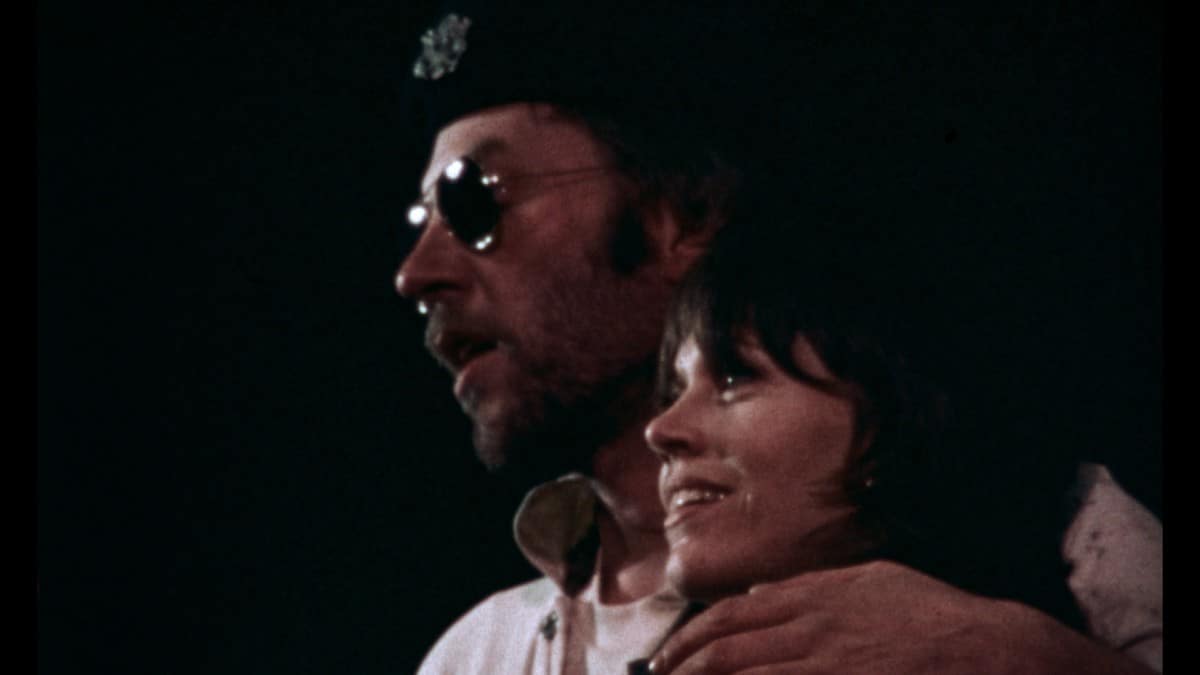Read also:
How to Watch FX Live Without CableHow To Watch AMC Without CableHow to Watch ABC Without CableHow to Watch Paramount Network Without CableKinoKultur is a thematic exploration of the queer, camp, weird, and radical releases Kino Lorber has to offer.
‘Vaudeville’ has more or less become shorthand in this country for any kind of loosely strung together schtick—a cheap, showy performance. But there was a time before the American Musical, before the American Cinema, that vaudeville was the premier American showcase of talent for working and middle-class audiences. Vaudeville acts, by their very nature, are fleeting bits and glimpses, thus always teetering on risque. There’s always the potential for a lurid reveal or a punchline that leaves ears ringing.
Given the diverse mix of creative acts in a vaudeville show which ranged from child stars and circus tricks to minstrel and burlesque performers, vaudeville was also always potentially dangerous. The possibility for sharp, if not outright violent, cultural criticism was high, and it could arise from either the performers themselves or their rowdy audiences. But as narrative and spectator homogeneity became the norm and the theater closed off to the lower classes, vaudeville was soon pushed to the margins.
Two films in Kino Lorber’s archive, Sweet Liberty (1986) and F.T.A. (1972), specifically relate vaudeville to American History. Both use the term “vaudeville” to describe a nonconforming narrative of history being performed — one uses it to slander, the other to celebrate. Putting them side by side allows us to see the radical potential of vaudeville with its ability to upend dominant narratives and sensibilities.
“The American Revolution was not a goddamn vaudeville show!” Alan Alda barks in his film Sweet Liberty. Sweet Liberty, written and directed by Alda, is the story of commitmentphobic historian Michael Burgess, whose life is turned upside down when a Hollywood film crew arrives in town to film an adaptation of his historical novel set during The Revolutionary War. His all-too-patient girlfriend (Lise Hilboldt) needs space, his mother (Lillian Gish) is seeing the devil, and the screenwriter (Bob Hoskins) has taken his own liberties with history. The leading man (Michael Caine) also has a few suggestions.
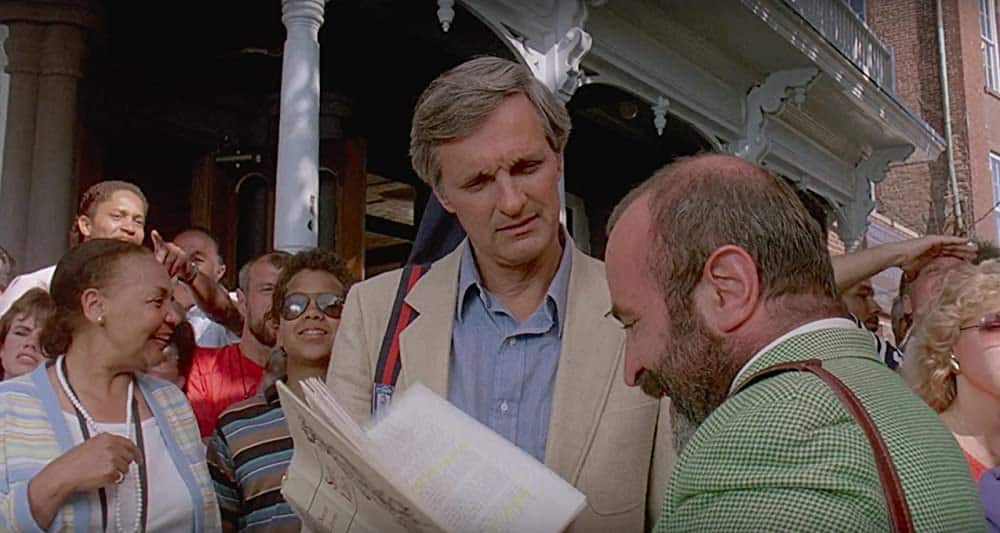
The only thing that seems to be correct is the star actress (Michelle Pfeiffer). She is a vision in costume, completely outside of time. She is the uncanny recreation of the figure from the past that Michael has dreamt of, studied, and fallen in love with. While the whole cast is at the top of their form, this role allows Pfeiffer to break out of her usual form and display a brilliant, knowing, and comedic versatility.
While the film suffers from a shoehorned relationship plot that tries to mirror the historical “romance” at the center of his book being filmed, the film excels when Michael confronts the film crew. This allows Alda full breadth to yell at Hollywood clouds, which is delightful. He rails against the vaudevillization of history after the director (Saul Rubinek) tries to persuade him that some changes were necessary to make the film marketable to young people.
“Three things,” he says, make movies sell to youths: 1) defiance of authority, 2) destruction of property, 3) nudity. The way he sees it, Michael’s book—and thus The American Revolution itself already has the first two, it just needs a few more ripped bodices.
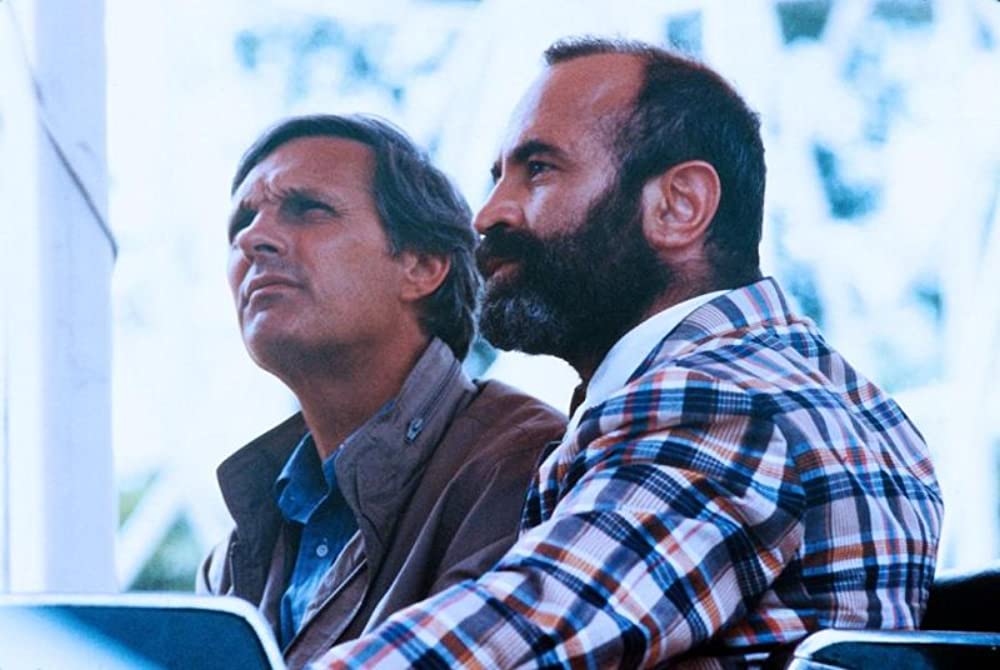
When Michael hurls ‘vaudeville’ as a slur, he means the film is making a mockery of historical “fact”. In an effort to make history more mass-appealing, in Michael’s eyes, they have lost the respectable real, that narrative of history which is already tailored, property sanitized, whitewashed, packaged, and reaffirming of other important national co-narratives. A vaudeville-ized version of history would tear at the accepted dignified, less bestial, narrative.
Francine Parker’s documentary F.T.A is a shining example of the truth and critical power vaudeville can wield. Parker’s film follows a troupe of performers including Jane Fonda, Donald Sutherland (both fresh off Klute), Paul Mooney, Holly Near, Len Chandler, Rita Martinson, and others as they tour American bases during the Vietnam war to perform in support of the G.I anti-war movement. Not only are we treated to extended looks at the sketches and songs performed for the troops during The F.T.A Show (Free/Fuck The Army), Parker also ventures into the audience to talk to the servicewomen and men about their feelings towards the war.
At the height of the war, there was considerable underground organization amongst GIs to protest American’s involvement in Vietnam, indeed the entire Pacific region and all of America’s imperial territories. As Parker and her team weave across warzones, talking to different troops, we get a sense of the diverse philosophies underpinning the movement which include rural populism, white feminism, and liberation theology.
But it’s clear that The Black Power Movement has had the biggest impact on the GIs, their anti-war movement, as well as the stage and film crews. Parker gives Black GIs the space and the necessary anonymity they need to really speak their minds and spread the word about what the movement’s aims were for Black people and all oppressed people. And it’s the Black internationalism that’s most on dazzling display here as it links not only to troops stationed in different countries but also to a host of other struggles going on in the world. It allows the GIs as well as Fonda and company to see themselves as part of a bigger picture, one which lends credence and strength to their movement.
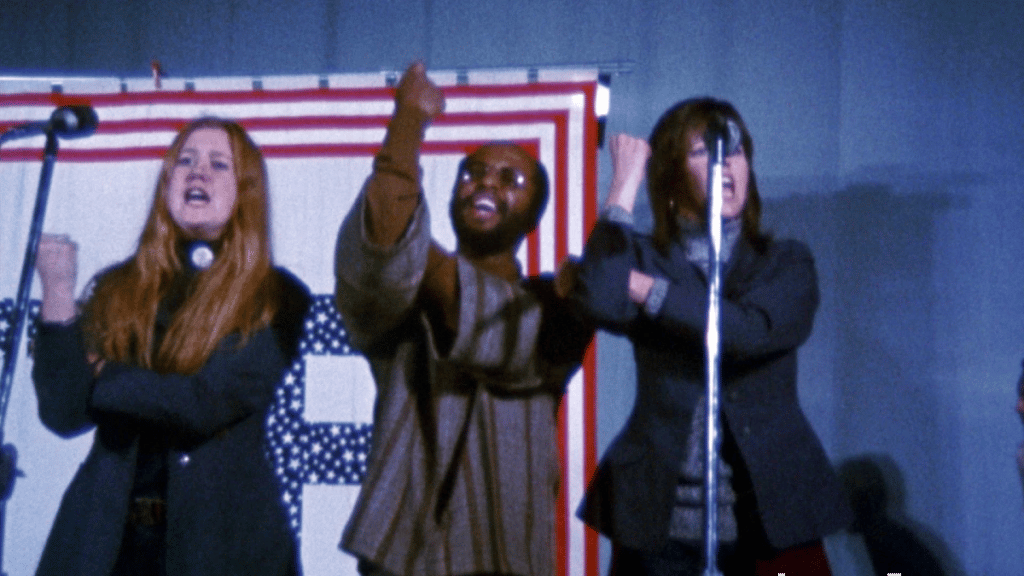
The performances, and the documentary itself, act as a “countershow” to the typically chauvinist USO tours Bob Hope was still carrying on at the time. “It’s political vaudeville,” Fonda says of the show when confronted by reporters. For Fonda and cast, this was not a time to “raise anything new” but to lend support, to help get the GI anti-war message out there, and help them feel seen when they were most deserted.
The F.T.A. show’s sketches and songs—often lifted from underground GI literature are short, sharp, and deeply political bites that dig into the military’s hierarchies, ineptitudes, and inadequacies. While they’re frequently satirical, many of the acts in the show are earnest, knowing, sympathetic chuckles at the bleak realities these soldiers were facing. It is not a show of escapism, but one of recognition. With its quips, zingers, punchlines, jokes, songs, and gags, it’s a comedy show that’s the last of its kind during a war that’s itself the last of its kind.
The F.T.A. Show didn’t sit well with everyone, of course. The troupe runs into mysterious problems renewing their visas that threaten to derail their tour. And Parker shares one particular performance in which a few GIs responded poorly to the show and started an altercation. But the show’s biggest obstacle was to come after the film was released.
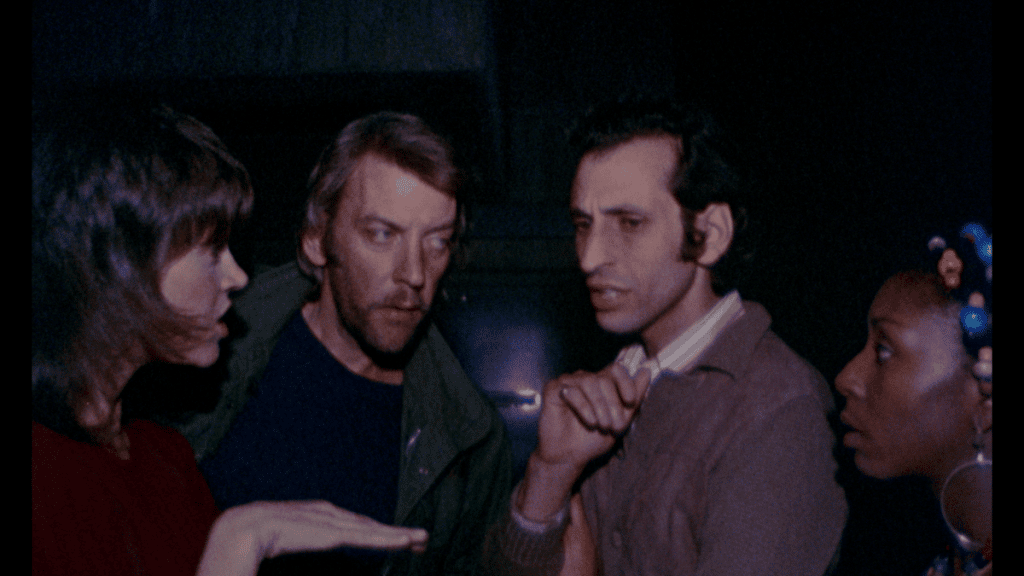
After only a week in theaters, F.T.A. was pulled from theaters and most of its negatives were destroyed. Though the official reason for this is not known for certain, it’s not hard to see why the film would be pulled by its distributor, American International Pictures. Sketches and songs performed during the show, like Donald Sutherland as a commander narrating and offensive like a sports commentator, highlight the callous gulf between those in command and those getting killed. Len Chandler’s folk songs, particularly those informed by Black call-and-response traditions, provoke and affirm a radical social consciousness.
Not only that, the film presents a bold, lively, and growing anti-war movement from within the military itself that is decidedly working class. Many of the anti-capitalist, anti-authoritarian, and anti-respectability sentiments fly in the face of the middle-class peace movement happening in Mainland America. The military is not a noble evil, some slowable stone. The military presented in F.T.A. is crude, corrupt, unceasing, and violent to the extreme.
Its (Vaudeville’s) loose eclectic structure, in conjunction with diverse casts and audiences, gives it the power to upend acceptable social ideas and narratives.
Both of the films considered here feature attempts to censor vaudeville. In Sweet Liberty, Alan Alda tries to stop the film crew from making a mockery of American history. Executives (and government officials?) successfully stopped the public from seeing The F.T.A. Show make a mockery of the American military—until a full negative was rediscovered in 2009.
When taken together, Sweet Liberty and F.T.A. demonstrate that vaudeville, especially political vaudeville, is hardly as benign as we think it is. Its loose eclectic structure, in conjunction with diverse casts and audiences, gives it the power to upend acceptable social ideas and narratives. In the cases of Sweet Liberty and F.T.A., acceptable narratives of American history and military imperialism are challenged and mocked in ways that help us ask these critical questions: What does it mean to write or perform accurate history? And who benefits most from determining those meanings?

